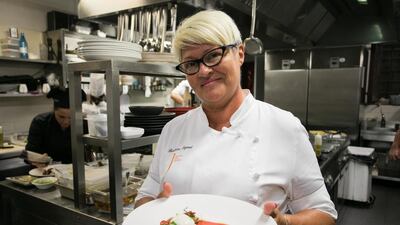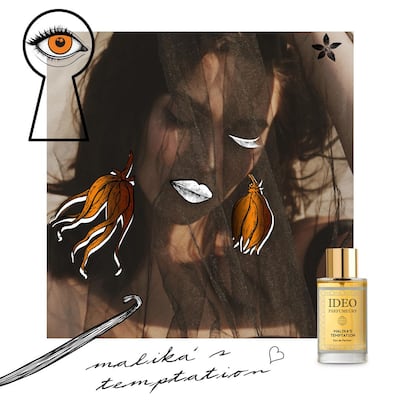As children, we were probably all intoxicated by the scent of vanilla in our cakes, ice creams and sweets. And as adults, we can channel our remembrance of things past, as French writer Marcel Proust would have said, when we catch a whiff of a vanilla fragrance.
In fact, this spice, harvested from a special orchid originally hailing from Mexico and also grown in Madagascar, the Reunion Islands, India and Indonesia, is the trendiest ingredient in perfumery today. Don’t mistake it for the vanilla of your childhood, though – this is a newly spicy, sultry and exhilarating scent that adds volume, as well as a Far Eastern feel, to some of the most coveted fragrances around, as we discovered at this year’s Pitti Fragranze.
A leading niche perfumery event, Pitti Fragranze is held in Florence every September. Hundreds of fragrance producers, distributors, retailers and experts descend upon the Tuscan city to discover the latest trends and newest innovations in the olfactory art. This year, they were treated to a series of talks, events and encounters, including a conference titled “Madagascar and its amazing raw materials, vanilla and other treasures”, dedicated to the superstar note of the fragrance world: Madagascan vanilla.
We enlisted the help of a renowned nose – the official name for someone who puts together notes and molecules into a bouquet to create a perfume – Luca Maffei, who is the leading perfumer at Atelier Fragranze Milano. We wanted to find out if vanilla is truly a new discovery, or something our noses and palates have been getting a taste of (subtly and subconsciously) for some time. “I think the vanilla trend has always been around,” Maffei explains. “In perfumery, it’s an oft-used ingredient and an olfactory trend, as vanilla is also the base for most oriental and amber scents.” So why are we calling it a contemporary trend? Maffei explains: “What’s changed is the perception of vanilla as we’ve gone back to discover its most natural note, precious and rich of nuances.”
More and more fragrances are either named after the spice, or highlight it as their main note, and he elaborates on that too, by clarifying that “it’s no longer fundamental to only communicate the sweetness of vanilla… today, noses love to emphasise in their creations vanilla’s deeper element, which is made of spicy accents and animalistic notes”.
Maffei certainly believed in vanilla strongly enough to come up with his own version for Atelier Fragranze, called Vanhera. "I chose to use it at the heart of the fragrance and added spicy accents with notes of cardamom, and pink and Szechuan pepper. On the base, to showcase the darker aspect of the vanilla, I added a molecule of Karmawood which, with its woody amber notes, reminds us of sandalwood." The result is another exhilarating fragrance signed by the renowned nose that can easily be worn by both men and women.
Fragrance creator Ludmila Bitar, the nose and co-founder of Ideo Parfumeurs in Beirut, says that in her opinion “vanilla is an underestimated ingredient” that is usually “associated in a very cliche way to gourmand fragrances”. In her own line, Bitar has chosen to highlight it and give it a grown-up feel, but also admits that she never uses it “as a top note, but in the deep heart of a creation, to give a twist and offer something unexpected”. At the core of her delicious, bestselling fragrances Last Canto and Malika’s Temptation lies a wonderfully warm heart of vanilla.
Muscat-based company Oman Luxury also offers three fragrances in its collection that contain vanilla notes, as the brand’s general manager Ahmed Al Esry tells us when we meet him in Florence. He adds that this spice has been a trendsetter for quite some time in Oman Luxury’s line, as proven by its Mariya, Angham and Zafar scents.
Another vanilla-related discovery in Florence is that the ingredient is now making a long overdue debut in savoury dishes produced by some adventurous gourmet chefs. One such cook is Beatrice Segoni, who organised a special dinner inspired by the spice at Ristorante Konnubio, to mark the inauguration of this year’s Pitti Fragranze. With a menu titled Emotion Vanilla, chef Segoni jumped head first into the trend, serving up a tomato water with tomato coulis topped with shrimp as a starter, followed by an almond milk and coffee risotto, a baccala cod fish main dish with a Basque-inspired pil pil sauce, and ending with a chocolate cannoli – all infused with vanilla.
The flavour might appear to be an easy match when worked into the dessert, but how challenging was it to incorporate vanilla into the savoury dishes? “To combine vanilla with savoury dishes is not so simple, but the way to make it successful is to combine all the various ingredients, blending the different flavours,” Segoni explains.

Balance was key to ensuring a successful meal. “Obviously, you have to respect the product you are using, so as not to overdo it – especially because vanilla has a very intense scent and a truly strong aroma,” Segoni adds. And would this chef take the spice out of the kitchen, and wear a vanilla fragrance? “I don’t personally love sweet perfumes, but vanilla in my opinion is not simply sweet,” she admits. “I would love a perfume with the aroma of vanilla but also containing a fresh note, something more acidic, even citrusy, blended with it.”
Five to try
Ideo Parfumeurs' Malika's Temptation is meant to convey the story of a great queen, but also of impossible love. It combines a heart of vanilla, used as a base note with accents of labdanum and oud, kicked off by rose, ylang-ylang and praline, to create a unisex fragrance that is pleasing and warm.
Tom Ford's Tobacco Vanille is more masculine and was created with an English gentlemen's club in mind. Notes include creamy vanilla, of course, as well as tobacco leaf, cocoa, some dry fruit accords and spicy ginger.
Filippo Sorcinelli's Unum - Opus 1144 is a perfume inspired by French Gothic architecture. It is powdery and spicy, and only after wearing it a while does the vanilla note actually appear, since it's part of the fragrance base, with top notes of jasmine, resin and deep citrus.
Laboratorio Olfattivo's Vanhera is a fragrance signed by nose Luca Maffei, who mixed spices such as pepper, cardamom and cinnamon to take away from the typical sweetness of the vanilla. The result is a journey through vanilla with more than a hint of the fantastic thrown in for good measure.
Teatro Fragranze Uniche's Dolce Vanilla combines the delightful scent of vanilla with the sweetness of icing sugar, the delicacy of dark chocolate and a note of playful caramel. This room fragrance is for those who don't wish to spray vanilla on themselves and yet crave a warm and welcoming atmosphere, perfect for kitchens, dining and meeting rooms.
________________________
Read more:
Four autumn food festivals in Italy
'Table Tales' extracts: four stories and recipes to try
New guide focuses on honest ethical eateries, so which UAE restaurants made the cut?
Kitchen 'gran' central: the taste for family favourites has returned
________________________


